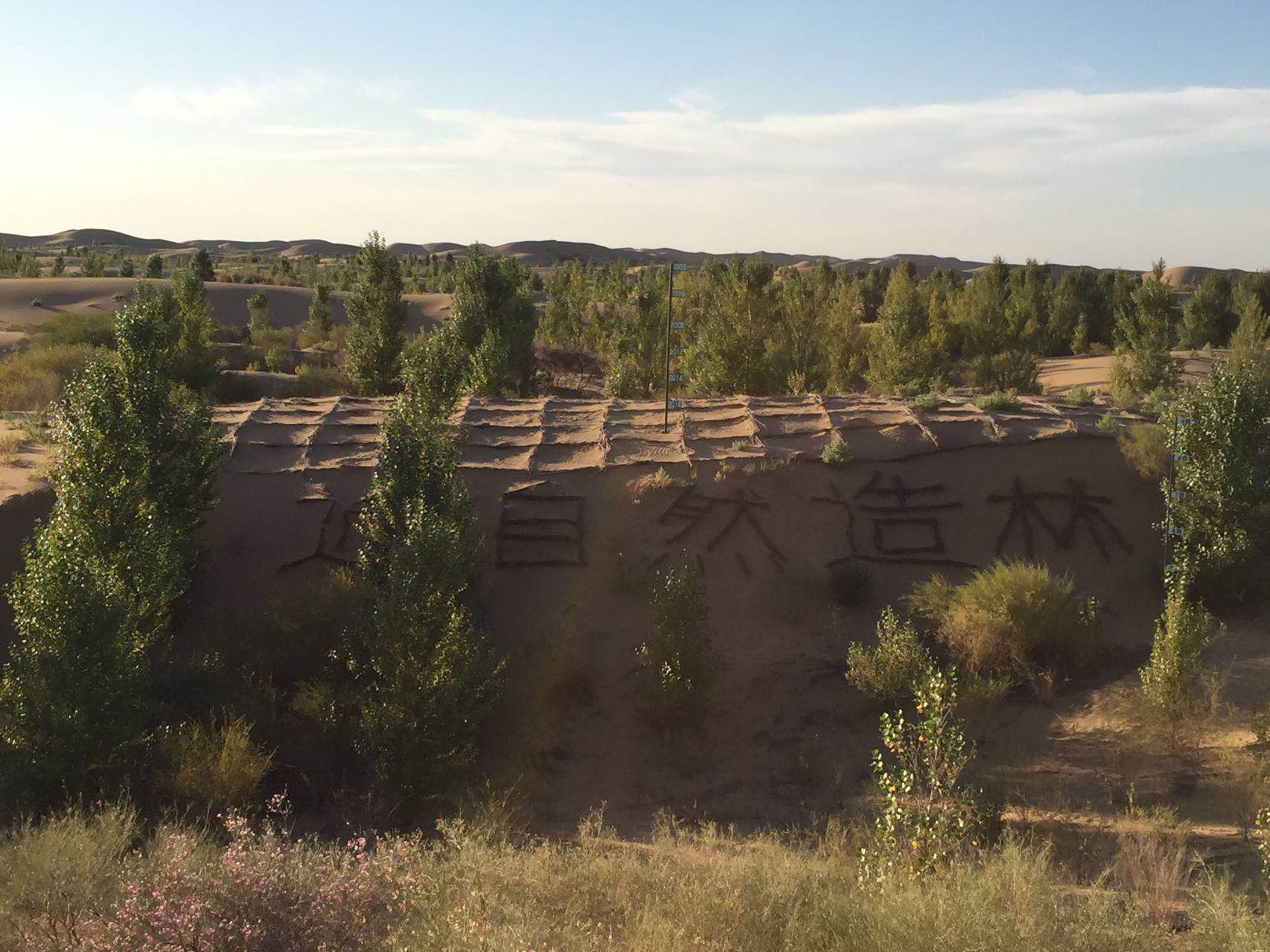Kubuqi Desert reborn after decades of ecological construction
Updated: 2017-09-26 (en.goordos.com)  Print
Print 



“The environment in Ordos used to be quite terrible. The sand piled up halfway up the walls after a sandstorm overnight in spring,” said Li Fuxiang, recalling his childhood more than 30 years ago.
Li, a villager near the Kubuqi, China’s seventh largest desert in the Hanggin Banner of Ordos, Inner Mongolia autonomous region, said the cost of planting a tree almost equaled that of raising a child due to little precipitation.
However, some 30 years later, the desert area Li calls home has a wide variety of trees and is a home to wild animals.

A forest in Ordos [Photo/goordos.com]
In 2015, there were 95 percent fewer dusty days in Kubuqi than 20 years ago, partly because annual rainfall had increased to more than 300 mm.
Cross-sand highway turns Kubuqi into an oasis
The east-west Kubuqi Desert, 18,900 square kilometers in area, takes up 40 percent of Hanggin Banner.
Before the completion of a cross-desert highway, communication between the Banner and the outside world was highly inconvenient.
Started in 1997, the road’s construction was funded by 130,000 villagers along the planned route, according to deputy director of the Banner’s forestry bureau, Jiang Youze.
The workers braved sandstorms, scorching heat and water shortages to finish the project in October 1999.
The highway has greatly smoothed transportation, tourism and poverty alleviation in Hanggin Banner.
Creating unique model for ecological governance
Ordos found an innovative way to replace afforestation, the most common practice in combating desertification. Tongyuan Group, a local enterprise involving in ecological projects, makes money from the annoying sand.
Tongyuan's Vice General Manager Nao Mensheng said they produce environmentally-friendly bricks from a mixture of aeolian sand, industrial wastes -- coal refuse and fly ash -- and clay at a ratio of 4:3:2:1.
The annual output is about 50 million bricks from 50,000 tons of aeolian sand, 37,500 tons of coal refuse, 25,000 tons of fly ash and 12,500 tons of clay, according to Nao.
Ordos looks beyond greening
Wu Zhihua, a villager living below the poverty line in Hanggqin Banner said she would shake off poverty at the end of this year thanks to a licorice project.
She started to work for it in May and has earned more than 30,000 yuan ($4,552).
The project, launched by the Ordos-based ecological restoration company Elion Resources, helps local poor people develop their own businesses with licorice planting or employs them at its ecological bases with a daily wage of 200 yuan, said Sun Yongqiang, vice general manager of the Kubuqi ecological business arm of Elion Resources.
Through more than 30 years’ effort Ordos has pushed back the sand and developed its own desertification control model that can be useful for the rest of the world.





 Ordos Impression
Ordos Impression Ordos WeChat
Ordos WeChat Ordos Reported
Ordos Reported
